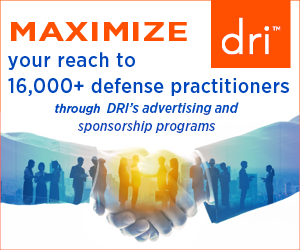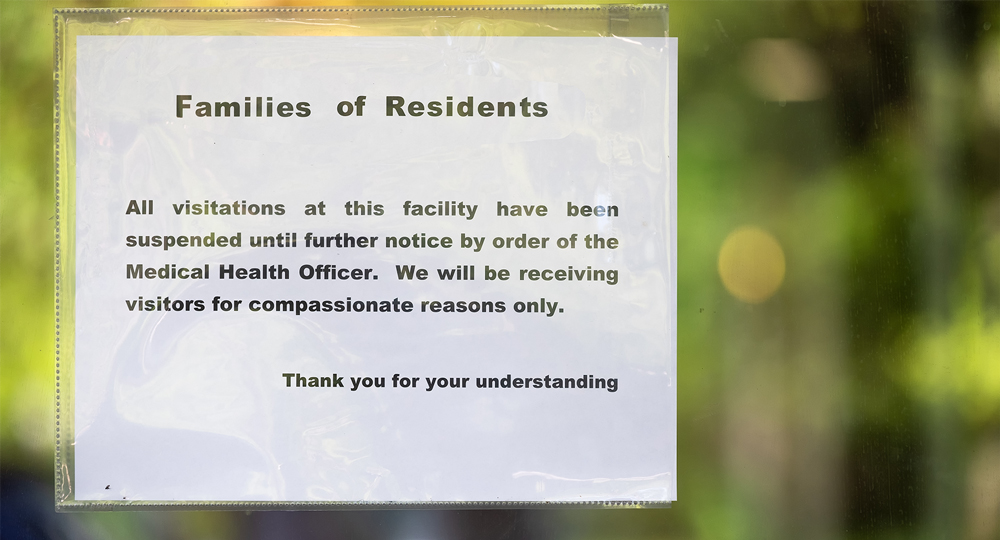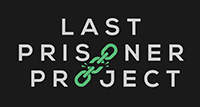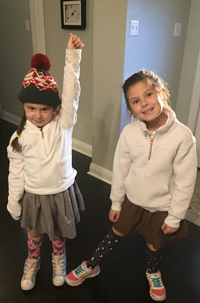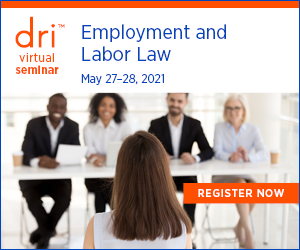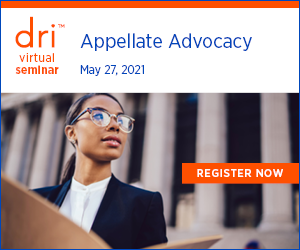Supreme Court Sides with Energy Companies in Climate Change Case
By Carmen R. Toledo
Climate change cases continue to proliferate and work their way through the courts. Whether those cases belong in federal or state court remains an important—and yet unresolved—question. In a procedural ruling that addresses at least part of that issue, the U.S. Supreme Court has reversed a decision in which the Fourth Circuit held that it lacked jurisdiction to consider all of the defendants’ grounds for removal under 28 U.S.C. §1447(d). See BP P.L.C. v. Mayor and City Council of Baltimore, No. 19-1189, slip op. (May 17, 2021). DRI has been closely following this case. DRI National Director John Guttmann wrote about the case (p. 8) when the Supreme Court granted certiorari and DRI, through its Center for Law and Public Policy, filed an amicus brief supporting the petitioners.
The City of Baltimore is just one of several municipalities that have sued energy companies claiming they are responsible for climate change and sea level rise. Baltimore filed its lawsuit in Maryland state court in 2018, asserting state law causes of action and seeking to recover damages the City allegedly has suffered (and will continue to suffer) as a result of climate change. The energy companies timely removed the case to federal court, invoking several federal statutes. Most notably, the energy companies relied on federal officer jurisdiction (28 U.S.C. §1442(a)(1)), arguing that some of the challenged operations—exploration, drilling, and production operations—“took place at the federal government’s behest.” Slip op. at 2. The City filed a motion for remand, arguing that none of the companies’ grounds for removal were valid. The district court agreed and remanded the case.
While a remand order is generally not appealable, 28 U.S.C. §1447(d) allows appellate review when the removal was based on §1442 (federal officer) or §1443 (civil rights). Relying on their federal officer jurisdiction argument, the defendants appealed. The Fourth Circuit, however, read §1447(d) as allowing it to review only that portion of the remand order specifically discussing §1442 and refused to consider all the other grounds for removal that the defendants had asserted. Mayor & City Council of Baltimore v. BP P.L.C., 952 F.3d 452 (4th Cir. 2020).
In an opinion written by Justice Gorsuch for a 7–1 majority, which aligned with the argument set forth in DRI’s amicus brief, the Court ruled that the Fourth Circuit should have considered the remand order in its entirety. Specifically, the Court ruled that the ordinary meaning of §1447(d)’s text permits review of the district court’s entire remand order when a defendant relies on §1442 as grounds for removal—noting that the word “order” in §1447(d) means the entire district court’s order, which in this case expressly ruled on all of the defendants’ grounds for removal. Slip op. at 4–5. The Court rejected the City’s argument that exceptions to statutory rules should be construed narrowly, as well as a new argument that defendants did not really remove the case “pursuant to” §1442. Id. at 7–8.
Justice Sotomayor, the sole dissenter, argued that the Court’s ruling allows defendants to “sidestep §1447(d)’s bar on appellate review by shoehorning a §1442 or §1443 argument into their case for removal. In other words, it lets the exception swallow the rule.” Dissenting op. at 2. The majority considered this argument and rejected it, explaining that the “Court’s task is to discern and apply the law’s plain meaning as faithfully as we can, not to assess the consequences of each approach and adopt the one that produces the least mischief.” Slip op. at 13 (citation omitted). Justice Alito did not participate in the case.
The Court declined to consider the grounds for defendants’ removal, and remanded the case to the Fourth Circuit for consideration of those grounds “in the first instance.” Slip op. at 14. While the decision does not address the question of whether the case will ultimately remain in federal court, it is a clear victory for defendants in climate change cases and beyond. The decision resolves a circuit split and makes it clear that, if a remand order is appealable under §1447—i.e., if one of the grounds for removal was §1442 or §1443—the entire remand order must be considered on appeal.
 Carmen R. Toledo is a partner in the Atlanta office of King & Spalding. Her practice focuses on litigation involving toxic torts, environmental disputes, product liability, and other complex litigation matters. She represents chemical, agricultural, pharmaceutical, and energy industry clients in individual, mass joinder, and class action cases across the United States, at both the trial and appellate levels. Carmen is member of the DRI Board of Directors and a past chair of the DRI Toxic Torts and Environmental Law Committee.
Carmen R. Toledo is a partner in the Atlanta office of King & Spalding. Her practice focuses on litigation involving toxic torts, environmental disputes, product liability, and other complex litigation matters. She represents chemical, agricultural, pharmaceutical, and energy industry clients in individual, mass joinder, and class action cases across the United States, at both the trial and appellate levels. Carmen is member of the DRI Board of Directors and a past chair of the DRI Toxic Torts and Environmental Law Committee.
DRI Files Brief in Missouri Talc Case
DRI—The Voice of the Defense Bar filed an amicus brief on April 5, 2021, supporting certiorari in the U.S. Supreme Court in the high-profile talcum powder case against Johnson & Johnson, where a Missouri appellate court affirmed a judgment of over $2 billion. The case had twenty-two plaintiffs whose disparate claims were consolidated for trial under twelve states’ laws, with jury instructions that took five hours to review. This consolidation was not just unwieldy, but raised substantial due process concerns, compromising the defense of each plaintiff’s case and severely prejudicing Johnson & Johnson. In particular, despite the fact that each plaintiff had a unique case based on individualized facts, the jury awarded each plaintiff an identical $25 million, followed by an astounding $1.6 billion in punitive damages—a figure that is more than eleven times the compensatory damages. DRI’s brief emphasized the concerns that all product liability defendants experience, given the unfairness arising from consolidated trials. The brief analyzed the depth and breadth of prejudice arising in consolidated trials and demonstrated why the resulting verdict was inconsistent with fundamental due process principles.
DRI’s brief, filed through the Center for Law and Public Policy, was authored by Lisa Baird of Reed Smith in Miami. Ms. Baird is chair of the DRI Appellate Advocacy Committee and a member of the DRI Amicus Committee.
Florida Updates Summary Judgement Standards
The Florida Supreme Court finalized an amendment largely to replace the text of Florida’s summary judgment rule (Florida Rule of Civil Procedure 1.510) with the text of Federal Rule of Civil Procedure 56, with some exceptions for timing-related issues. The amendment takes effect on May 1, 2021, and applies to any summary judgment motion decided on or after that date, including in pending cases. DRI, through the Center for Law & Public Policy, had urged the court to adopt this change.
Climate Change Hot Sheet: Big Second Circuit Greenhouse Gas Victory for the Oil Industry
By Steven M. Siros
Breaking from the pack and potentially creating a circuit split, the Second Circuit’s decision in City of New York v. Chevron, et al., dismissing New York’s City’s climate change lawsuit, is a significant victory for the oil and gas industry. The unanimous ruling from the Second Circuit affirmed a district’s court decision dismissing New York’s common law claims, finding that issues such as global warming and greenhouse gas emissions invoked questions of federal law that are not well suited to the application of state law.
Taking a slightly different tack than state and local plaintiffs in other climate change lawsuits, the State of New York sued five oil producers in federal court, asserting causes of action for (1) public nuisance, (2) private nuisance, and (3) trespass under New York law stemming from the defendants’ production, promotion, and sale of fossil fuels. New York sought both compensatory damages and a possible injunction that would require defendants to abate the public nuisance and trespass. Defendants filed motions to dismiss that were granted. The district court determined that New York’s state law claims were displaced by federal common law and that those federal common law claims were in turn displaced by the Clean Air Act. The district court also concluded that judicial caution counseled against permitting New York to bring federal common law claims against defendants for foreign greenhouse gas emissions.
The Second Circuit agreed with the district court, noting that the problems facing New York can’t be attributed solely to greenhouse gas emissions in the state nor the emissions of the five defendants. Rather, the greenhouse gas emissions that New York alleges required the City to launch a “$20 billion-plus multilayered investment program in climate resiliency across all five boroughs” are a byproduct of emissions around the world for the past several hundred years.
As the Second Circuit noted, “[t]he question before it is whether municipalities may utilize state tort law to hold multinational oil companies liable for the damages caused by greenhouse gas emissions. Given the nature of the harm and the existence of a complex web of federal and international environmental law regulating such emissions, we hold that the answer is ‘no’.”
Finding that New York’s state common law claims were displaced by federal common law, the Second Circuit then considered whether the Clean Air Act displaced these federal common law claims. The Second Circuit noted that the Supreme Court in Am. Elec. Power Co. v. Connecticut (AEP) (2011) had previously held that the “‘Clean Air Act and the EPA actions it authorizes displace any federal common-law right to seek abatement’ of greenhouse gas emissions.” As to the State’s damage claims, the Second Circuit agreed with the Ninth Circuit’s reasoning in Native Vill. Of Kivalina v. Exxonmobil Corp. (9th Cir. 2012) that the “displacement of federal common law does not turn on the nature of the remedy but rather on the cause of action.” As such, the Second Circuit held that “whether styled as an action for injunctive relief against the Producers to stop them from producing fossil fuels, or an action for damages that would have the same practical effect, the City’s claims are clearly barred by the Clean Air Act.”
The Second Circuit was careful to distinguish its holding from the holdings reached by the First, Fourth, Ninth, and Tenth circuits in prior climate change cases, noting that in those other cases, the plaintiffs had brought state law claims in state court and defendants then sought to remove the cases to federal courts. The single issue in those cases was whether the defendants’ federal preemption defenses singlehandedly created federal question jurisdiction. Here, because New York elected to file in federal as opposed to state court, the Second Circuit was free to consider defendants’ preemption defense on its own terms and not under the heightened standard applicable to a removal inquiry.
Whether the Supreme Court will be more inclined to review the Second Circuit’s decision in light of its recent decision in BP PLC et al v. Mayor and City Council of Baltimore remains to be seen. As discussed in greater detail in the Center For Law and Public Policy’s coverage of the decision above, the Supreme Court found in a 7–1 decision on May 17, 2021, that the Fourth Circuit had erred in concluding that it only had narrow jurisdiction to review whether the case had been properly removed under the “federal officer removal statute.” Here, the defendants had alleged a number of different grounds for removal, one of which is known as the “federal officer removal statute” that allows removal to federal court of any lawsuit filed against an officer or person acting under that office of the United States or an agency thereof, but the Fourth Circuit found that it could only consider the federal-officer removal ground. The Supreme Court found that there was nothing in the statutory language that would appear limit the scope of the appellate court’s review, noting that “[§1447(d)] allows the courts of appeals to examine the whole of a district court’s ‘order,’ not just some of its parts or pieces.”
The Supreme Court was very specific in noting that it was not weighing in on the merits of the underlying nuisance claims, noting that “[t]he merits of that claim have nothing to do with this appeal. The only question before us is one of civil procedure.” As such, resolution of the broader question of whether the state law nuisance claims are in fact preempted under federal law will have to wait for another day.  Steven M. Siros is a partner of Jenner & Block in Chicago, where he chairs the firm’s environmental litigation practice and co-chairs the environmental workplace health and safety practice. He focuses primarily on environmental and toxic tort matters. Corporations seek his counsel on complex CERCLA and RCRA matters and cases involving toxic tort and natural resource damages. He counsels policyholders in insurance coverage disputes relating to environmental issues, advises on regulatory compliance issues, and assists clients on a variety of climate change and sustainability issues. Mr. Siros serves on the DRI Toxic Torts and Environmental Law Committee as chair of its Regulatory Lawyers Subcommittee.
Steven M. Siros is a partner of Jenner & Block in Chicago, where he chairs the firm’s environmental litigation practice and co-chairs the environmental workplace health and safety practice. He focuses primarily on environmental and toxic tort matters. Corporations seek his counsel on complex CERCLA and RCRA matters and cases involving toxic tort and natural resource damages. He counsels policyholders in insurance coverage disputes relating to environmental issues, advises on regulatory compliance issues, and assists clients on a variety of climate change and sustainability issues. Mr. Siros serves on the DRI Toxic Torts and Environmental Law Committee as chair of its Regulatory Lawyers Subcommittee.


 Baxter D. Drennon is a partner at Wright Lindsey & Jennings LLP in Little Rock, Arkansas, who focuses his practice on both product liability and transportation litigation. Baxter serves on the DRI Board of Directors.
Baxter D. Drennon is a partner at Wright Lindsey & Jennings LLP in Little Rock, Arkansas, who focuses his practice on both product liability and transportation litigation. Baxter serves on the DRI Board of Directors.


